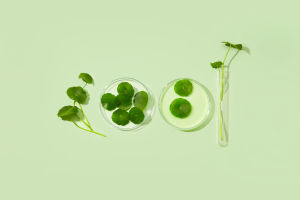Mushrooms are a unique class of organisms that are often mistaken for plants, but they belong to the kingdom of Fungi.
Unlike plants, mushrooms do not have chlorophyll and cannot obtain energy through photosynthesis; instead, they rely on decomposing organic matter to survive.
This decomposition function gives mushrooms an important role in the ecosystem as they break down dead plants, animals, and other organic matter into nutrients that enrich the soil.
There are more than 10,000 different species of mushrooms in the world. Some of these species are edible, while others are poisonous or even deadly. Mushrooms come in various shapes and colors, and their growing environments are also extremely diverse.
The most common mushrooms are umbrella-shaped, such as oyster mushrooms and shiitake mushrooms, with a typical cap and stipe structure. Under the cap, gills or pores grow, which are where spores are produced and spread.
These spores allow mushrooms to reproduce and expand their growing area. Some species of mushrooms also form symbiotic relationships with trees or other plants, helping them absorb minerals from the soil, especially phosphorus.
In the history of edible mushrooms, they are not just food but are often given medicinal value. In Asian countries such as China and Japan, mushrooms are considered an important ingredient in medicinal diets.
For example, Ganoderma lucidum and Cordyceps sinensis are highly regarded for their immunomodulatory, anti-cancer, and antioxidant properties.
In recent years, Western countries have also begun to pay more attention to the medicinal value of mushrooms, especially in fighting modern diseases and maintaining immune health. The potential of mushrooms is now being widely studied by scientists.
Mushrooms are rich in nutrients, especially protein, vitamin D, B vitamins, and some minerals. They are not only an important source of protein for vegetarians but are also favored by those seeking healthy diets due to their low-calorie, low-fat, and high-fiber characteristics.
Additionally, mushrooms contain a large number of antioxidants, which help the human body fight free radicals and slow the aging process.
However, despite the rich nutritional and medicinal value of mushrooms, not all types are safe to eat. Many poisonous mushrooms exist in nature, and some are even very similar in appearance to edible mushrooms. Ingesting these poisonous varieties may cause poisoning, and in severe cases, it can be life-threatening.
Symptoms of poisoning from poisonous mushrooms usually include vomiting, diarrhea, hallucinations, and damage to the liver and kidneys. Therefore, extreme caution must be exercised when picking mushrooms in the wild, and it is always best to be guided by an experienced expert or purchase mushrooms that have been professionally tested.
Beyond their edible and medicinal uses, mushrooms play an indispensable role in the ecosystem. They decompose dead plants and animals, breaking down complex organic matter into simpler elements, which re-enter the soil to provide nutrition for plants.
This natural cycle helps maintain the balance of the ecosystem. Without fungi such as mushrooms, the decomposition of organic matter on Earth would slow down considerably, leading to the accumulation of dead plants and animals. This would also affect the overall health of ecosystems.
The history of mushroom cultivation can be traced back thousands of years. Early humans likely discovered the edible value of certain mushrooms by accident and began cultivating them at home or in the field.
Today, mushroom cultivation techniques have been highly developed, and many countries now have dedicated mushroom farms that produce large quantities to meet market demand.
In these farms, mushrooms are typically grown in specially treated compost, allowing for a short growth cycle and high yield.
However, some high-value mushrooms, such as truffles and Cordyceps, still rely on specific natural environments and are difficult to cultivate artificially on a large scale.
As a unique type of fungus, mushrooms span multiple fields, including food, medicine, and ecological protection. They show vast application potential, and although they appear simple in form, they contain rich natural mysteries and scientific value.
For humans, exploring and utilizing the diversity of mushrooms not only demonstrates respect for nature but is also an important aspect of future sustainable development.


